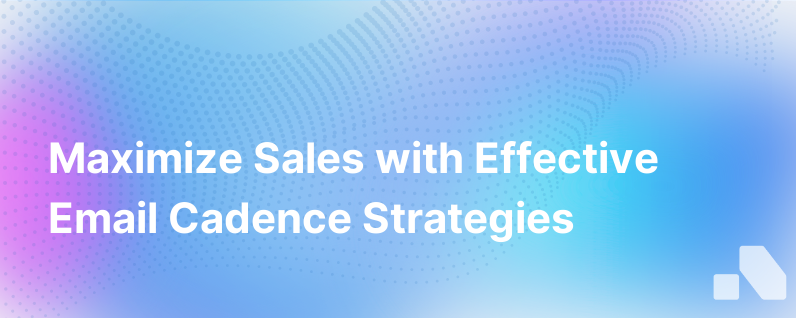
Email has steadfastly held its place as a cornerstone of B2B communication and marketing strategies. Yet, in the cacophony of crowded inboxes, it’s harder than ever to get the attention of your prospects. Succinctly, you need to ensure your emails not only reach your audience but also resonate with them. Email cadence software has become increasingly popular as it aids marketers and sales professionals in automating and optimizing their email outreach, ensuring a seamless flow in communication.
Here's an in-depth exploration into seven strategic tips for harnessing the full potential of your email cadence software to foster meaningful connections and drive conversions.
1. Define Your Target Audience
Before diving into the mechanics of email cadence, gain a deep understanding of who you are reaching out to. This step is pivotal. Outline your ideal customer profile (ICP) based on demographics, firmographics, and psychographics. Segment your contacts appropriately to ensure your messages resonate with the specific challenges and aspirations of each subgroup.
Action Points:
- Analyze your existing customer base to identify common traits.
- Use this data to segment your audience accordingly in your email cadence software.
2. Personalize Your Messages
Personalization goes a long way to foster a connection. Email cadence software can dynamically insert personalized elements into your emails, such as the recipient's name, company, or industry. However, go beyond superficial tokens; tailor your messages to address the recipient's unique pain points and how your solution mitigates these challenges.
Action Points:
- Strive to include insights or content relevant to the recipient's current situation.
- Use data to customize not only the salutation but the entire content of your message.
3. Craft Compelling Subject Lines and Content
Your subject line is the gateway to your message. It should entice the reader to open the email without resorting to clickbait tactics. Pair this with engaging, valuable content that speaks directly to the reader's needs. Keep it concise, actionable, and informative. Since attention spans are decreasing, get to the point quickly.
Action Points:
- Experiment with A/B testing subject lines to determine what resonates best with your audience.
- Design content that's both educational and a gentle guide towards your Call-to-Action (CTA).
4. Optimize Send Times
Timing is crucial. You want your message to land when your prospects are most likely to engage. Email cadence software typically has features that allow you to schedule emails based on various factors, including time zones and past engagement patterns. Use these insights to reach out when your audience is most receptive.
Action Points:
- Monitor open and click-through rates to determine optimal send times.
- Use predictive send features, if available, to automate this process.
5. Analyze and Adjust Your Cadence
Pay attention to how your prospects are responding. Do they tend to open emails more on specific days or after certain intervals? Modify your cadence based on these signals. Too many touchpoints might be seen as intrusive, while too few may result in lost opportunities.
Action Points:
- Continuously analyze metrics such as open rates, click-through rates, and response rates to refine your email cadence.
- Use A/B testing to adjust the timing and frequency of follow-ups.
6. Integrate With Your CRM
For email cadence software to be effective, it needs to work in tandem with your customer relationship management (CRM) system. This integration will provide a holistic view of your prospect interactions and allow you to tailor further communications.
Action Points:
- Ensure your email cadence software syncs with your CRM to maintain a single source of truth for customer interactions.
- Use the data from CRM to inform the personalization and timing of your emails.
7. Stay Compliant With Email Regulations
In the quest for inbox visibility, don’t overlook the legalities. Abiding by email regulations such as GDPR, CAN-SPAM, and CASL is non-negotiable. Ensure your email cadence software supports compliance, whether it’s through double opt-in mechanisms or clear unsubscribe options.
Action Points:
- Be vigilant about maintaining a clean email list with proper consents.
- Have clear and easily accessible unsubscribe links in every email.
In conclusion, deploying an email cadence software for your B2B outreach can result in a sophisticated, well-timed, and effective campaign, leading to stronger relationships and higher conversion rates. Yet, to reap these benefits, one must be strategic — it starts with knowing your audience, personalizing the journey, and crafting content that captures attention. It also demands a continuous cycle of analyzing, testing, and adjusting to keep up with the dynamic nature of email engagements. By implementing these tips and leveraging the power of an integrated CRM, your email communications will not just reach the inbox but also the interests of your prospects. With these principles in play, email cadence software becomes a formidable tool in your marketing arsenal, and not just a means to an end.